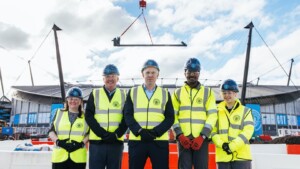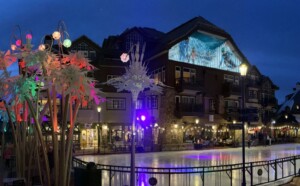ROLLER, the ticketing, CRM and POS specialist, has recently shared insights into face-to-face marketing, explaining what it means and how attractions can benefit from it, and sharing some top tips on how operators can use it to boost their attraction value.
“In an era dominated by digital marketing, it can be hard to stand out,” says the company. “That’s where face-to-face marketing adds a lot of value. For attraction venue operators, mastering this form of engagement can be a game-changer.”
Face-to-face marketing explained
Face-to-face marketing is a type of direct, in-person communication between businesses and prospective customers. It involves personalised interactions through events, trade shows, or one-on-one meetings
Face-to-face marketing is more hands-on and instantaneous than internet marketing since it depends on human connection. One key benefit is that it can help attractions build genuine connections, says ROLLER:
“The digital landscape can sometimes feel impersonal. Face-to-face marketing allows attraction venue operators to establish authentic connections with their audience. This personal touch fosters trust, making potential customers more likely to choose your venue over competitors.”
Face-to-face marketing can also help operators better understand their guests’ needs and gain insights into their preferences, which in turn can share future marketing strategies and enhance the visitor experience. Furthermore, it allows attractions to create memorable moments, leaving a lasting impression on potential visitors.
The opportunity to obtain immediate feedback is another big benefit of face-to-face marketing. Operators can read audience reactions in real-time using verbal cues, body language, and facial expressions, and quick changes to the marketing strategy are made possible by this instant feedback loop. Plus, in-person interactions can strengthen brand identity.
How to do it well
The team at ROLLER has also identified some face-to-face marketing best practices: use engaging storytelling, offer personalised interactions, and utilise technology for efficiency.
In face-to-face marketing, creating captivating storylines is essential. Operators should tell the history of their attraction and emphasise its unique features. Telling stories evokes emotional responses in visitors and makes the experience memorable.
Because every visitor is different, the way they engage with the attraction should also be distinctive. Operators can provide employees with training on how to have individualised interactions and demonstrate a sincere interest in each visitor’s unique preferences. Adding a personal touch helps create long-lasting relationships.
Although in-person marketing is by its very nature more intimate, technology can make it more effective. Attractions’ personnel can utilise technologies and apps that streamline processes. allowing them to concentrate more on meaningful connections rather than spending as much time on administrative work.
How to leverage face-to-face marketing for attractions
ROLLER has set out 10 top tips for visitor attraction operators, showing how they can get the best from this marketing technique.
- Promotional events. To attract the local community, attractions can hold promotions or special events in association with local businesses. This allows potential visitors to experience the venue for themselves and often creates a memorable experience.
- Pop-up stalls at local events. To interact with a variety of audiences, set up temporary stalls or booths at neighbourhood fairs, markets, or community activities. This boosts awareness, permits face-to-face communication, and draws people interested in local events.
- Guided tours and open houses. To highlight the venue’s amenities, features, and attractions, operators can provide guided tours or open house events. This gives prospective visitors a chance to look around the location, ask questions, and get a sense of what to expect.
- Partnerships with local businesses. Work together to cross-promote and provide joint packages with surrounding eateries, hotels, and other businesses. This taps into existing customer bases, offering advantages to both companies and improving the experience of guests in general.
- Interactive workshops and demonstrations. Operators can organise interactive demos, seminars, or workshops centred around the attraction’s activities or subjects. This involves the community, demonstrates expertise, and establishes the location as a fun and educational place.
- Mobile marketing units. Place mobile marketing units in busy areas and use them to distribute flyers, information, and a preview of the event’s offerings. By doing so, attractions can build a dynamic, mobile presence and reach a wider audience.
- Street teams and brand ambassadors. Use street teams or brand ambassadors to interact with people in busy places, handing out flyers and raising awareness. The benefits are that this creates a buzz about the location, lets people communicate directly, and adds a personal touch.
- In-person ticket sales and discounts. Establish a physical ticket sales station or kiosk with exclusive promos or on-the-spot discounts in prominent places, therefore promoting impulsive buying, offering instant satisfaction, and cultivating a feeling of exclusivity.
- Local sponsorships and community involvement. To show support for the community, attractions can sponsor charitable causes, neighbourhood sports teams, or gatherings. This boosts the reputation of the location, creates favourable associations, and draws visitors who value being involved in the community.
- Live performances and entertainment. To create a lively and enjoyable atmosphere, host live performances, entertainers, or themed events. By doing this, operators can attract attention, highlight the entertainment value of the location, and promote return visits.
“Face-to-face marketing remains a powerful tool for attraction venue operators,” concludes ROLLER. “The genuine connections forged through in-person interactions are invaluable in a world inundated with digital noise.
“By understanding the definition, embracing the benefits, and implementing best practices, attraction venues can unlock the full potential of face-to-face marketing, driving more bookings, growing revenue, and delivering an amazing guest experience.”
Earlier this month, ROLLER shared insights into visitor segmentation for theme parks and attractions, setting out approaches, applications, and best practices for this strategic process.














